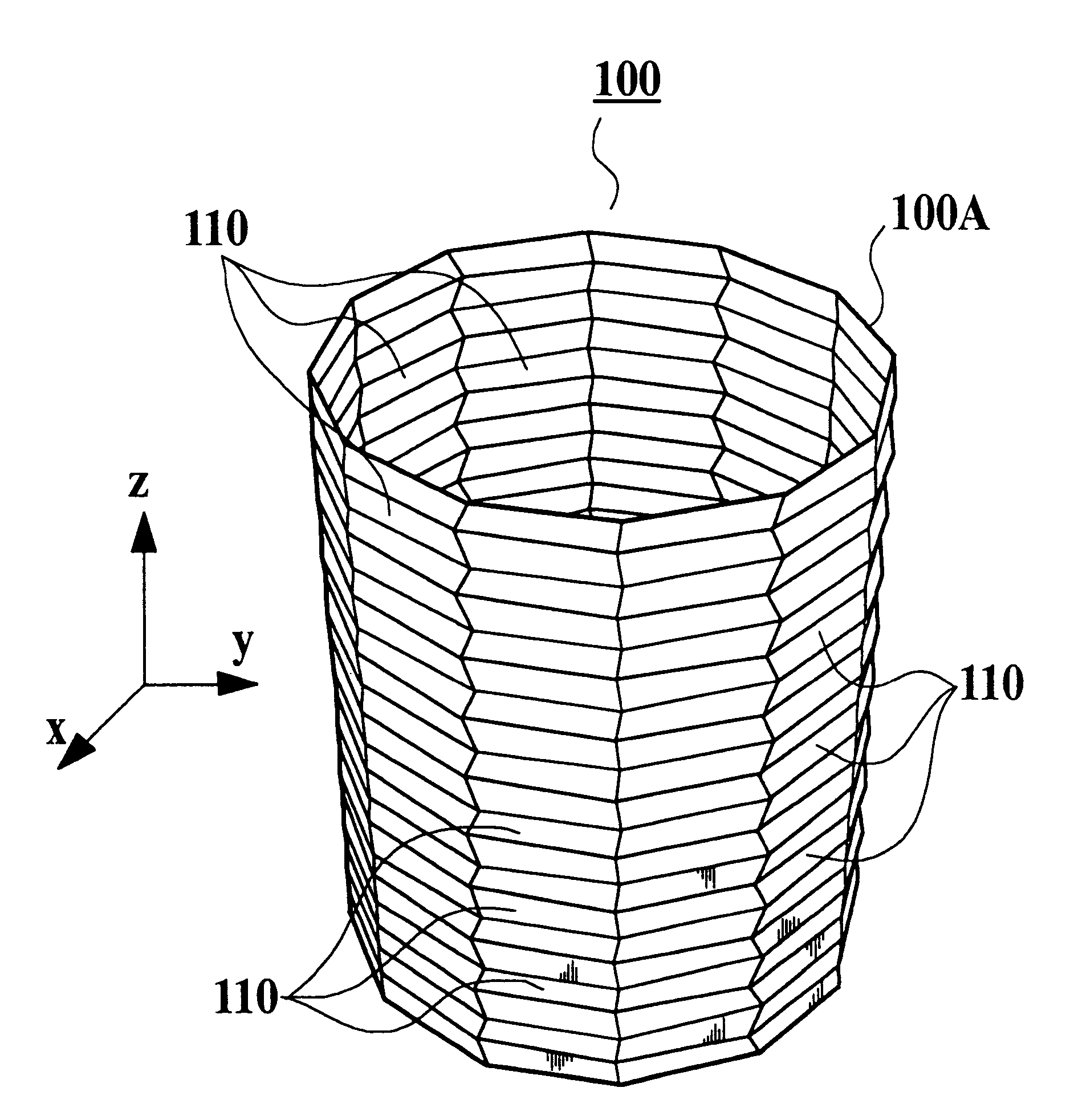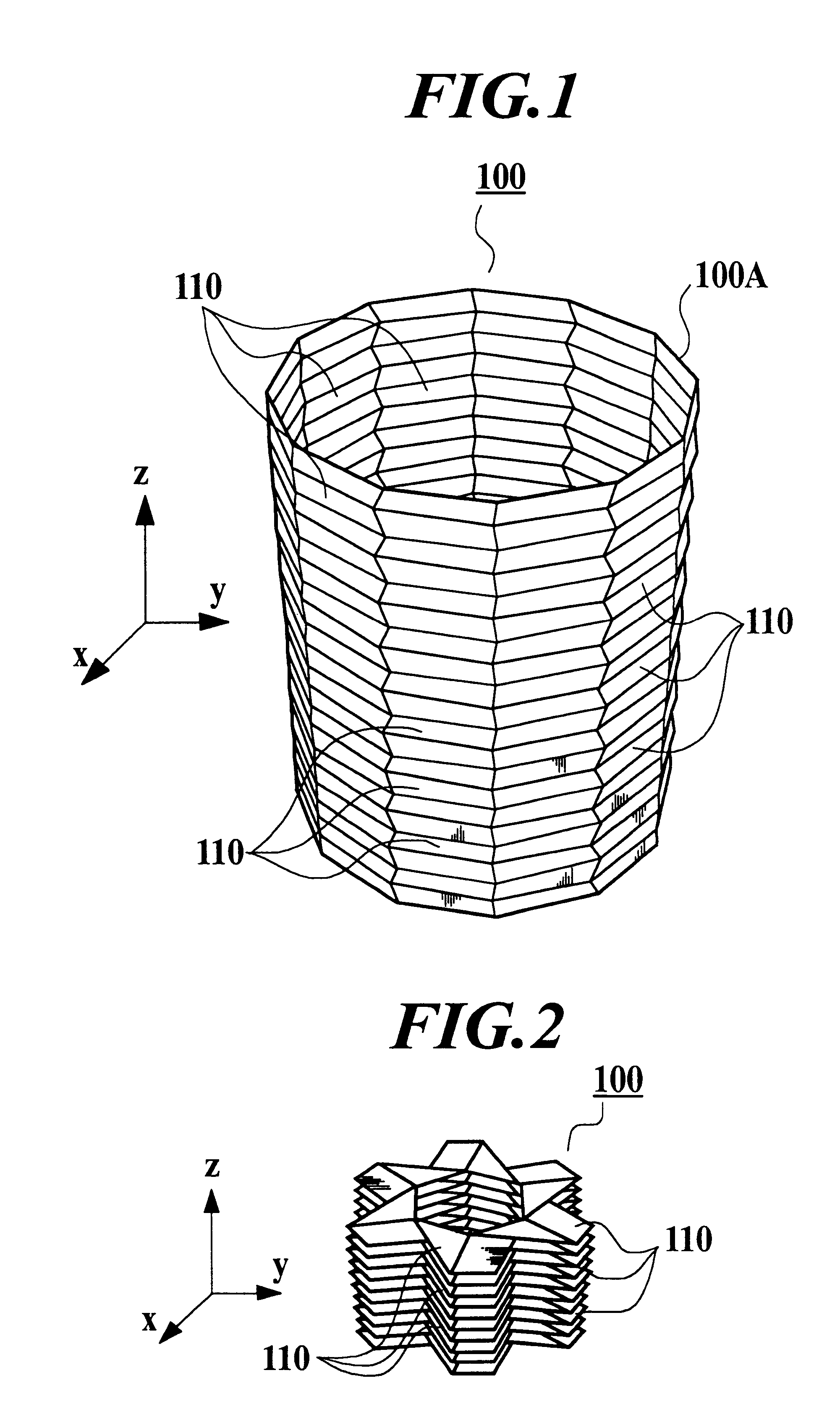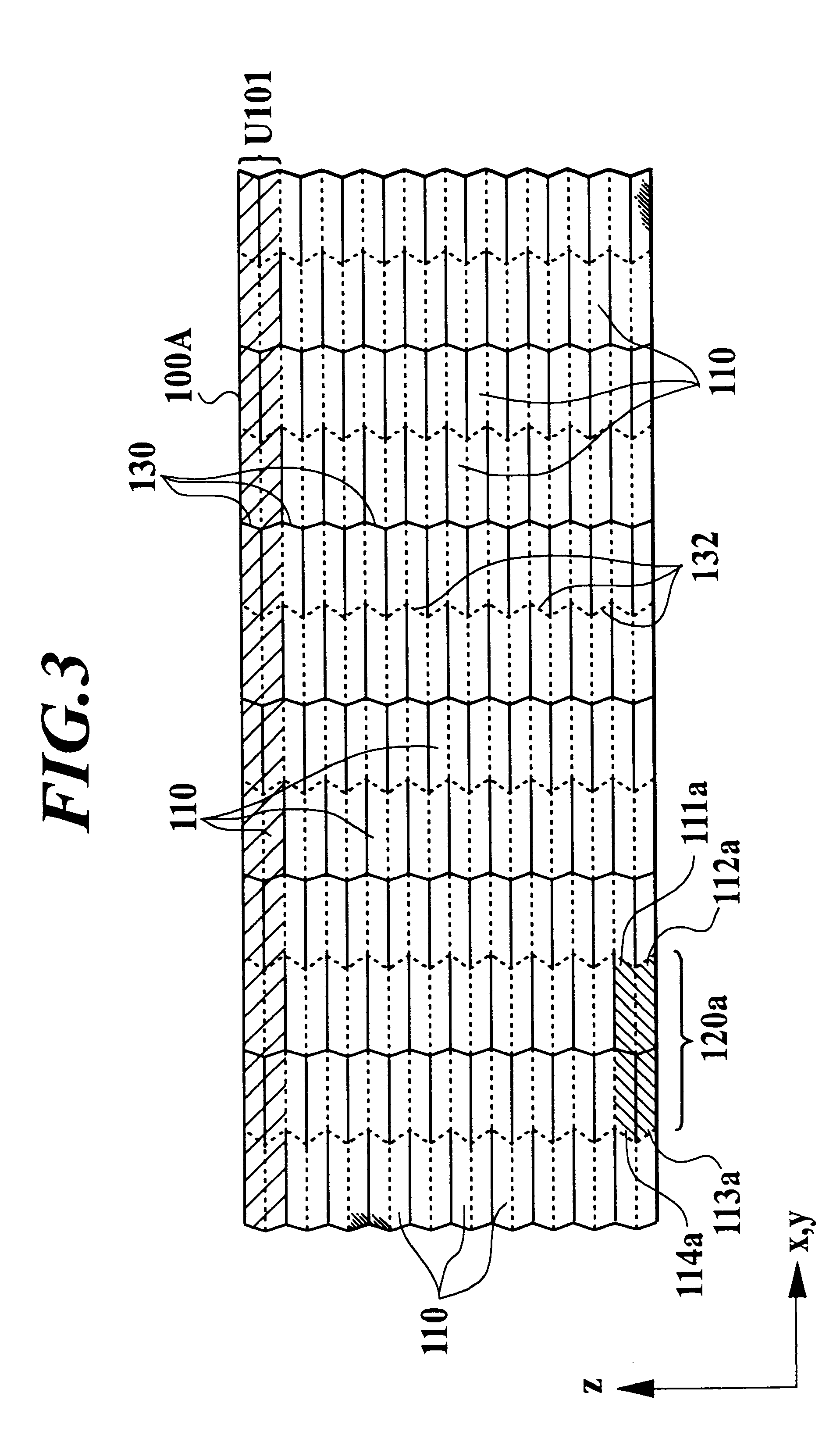Deployable structure
a technology of deployable structures and lateral directions, applied in the direction of parkings, transportation and packaging, building roofs, etc., can solve the problem that the early tube-like structure is not deployable in a lateral direction
- Summary
- Abstract
- Description
- Claims
- Application Information
AI Technical Summary
Benefits of technology
Problems solved by technology
Method used
Image
Examples
first embodiment
The tube-like deployable structure 100 comprises a plurality of ring-shaped units which are successively connected one after another in a Z-axial direction. Reference numeral U101 denotes one unit. The Z-axial direction means a direction of the central axis of the ring, as shown in FIG. 1. Each unit comprises six modules which are connected in a circumferential direction which is parallel with a X-Y-plane, as shown in FIG. 1. The X-Y-plane is perpendicular to the Z-axis. The module 120a comprises four segments 111a, 112a, 113a, and 114a each of which has the shape of a quadrangle, and which are connected to one another through connecting creases 120ao, 120ap, 120aq, and 120ar. Each adjacent segment, has an approximately same length relative to each other in the circumferential direction. The four segments 111a, 112a, 113a, and 114a are arranged to form a matrix of 2.times.2 so that the four connecting creases 120ao, 120ap, 120aq, and 120ar intersect at one point, as shown in FIGS. ...
second embodiment
A deployable structure according to the invention will be explained with reference to FIGS. 7 to 10, as follows.
FIG. 7 is a perspective view of a tube-like deployable structure 200 in a development state according to the second embodiment of the present invention, FIG. 8 is a perspective view of the tube-like deployable structure 200 in a packaged state, FIG. 9 is a plan development of the tube-like deployable structure 200, for explaining folds (creases) formed on the wall thereof, and FIG. 10 is a top view of the tube-like deployable structure 200 in a most packaged state. Dotted lines, which are parallel with the Z-axis, show the opening patterns in the connecting portions, while solid lines, which are parallel with the Z-axis, show the closing patterns in the connecting portions, as shown in FIG. 9. The opening patterns alternates with the closing patterns, in parallel with the Z-axis. The folding state in FIG. 10 is an ideal state and does not take into account a function of ov...
third embodiment
Next, a deployable structure according to the invention will be explained with reference to FIG. 19, as follows.
The tube-like deployable structure can be applied as a dust shield which protects the space systems from space debris and meteoroids. FIG. 19 is a schematic illustration of the tube-like deployable structure according to the third embodiment of the invention. Reference numeral 700 denotes the tube-like deployable structure, reference numeral 701 denotes a space shuttle, and reference numeral 702 denotes the space systems which is required to be protected from space debris or the like.
When the tube-like deployable structure 700, which is the axially symmetric type and the maximum number d.sub.max of the overlapped segments is four for one unit, is applied as the dust shield, the geometrical parameters are determined the by equations [Math 1] and [Math 2]. When a diameter 2R in the developed state is assumed to be 6 meters, a length in the direction of the central axis in th...
PUM
 Login to View More
Login to View More Abstract
Description
Claims
Application Information
 Login to View More
Login to View More - R&D
- Intellectual Property
- Life Sciences
- Materials
- Tech Scout
- Unparalleled Data Quality
- Higher Quality Content
- 60% Fewer Hallucinations
Browse by: Latest US Patents, China's latest patents, Technical Efficacy Thesaurus, Application Domain, Technology Topic, Popular Technical Reports.
© 2025 PatSnap. All rights reserved.Legal|Privacy policy|Modern Slavery Act Transparency Statement|Sitemap|About US| Contact US: help@patsnap.com



